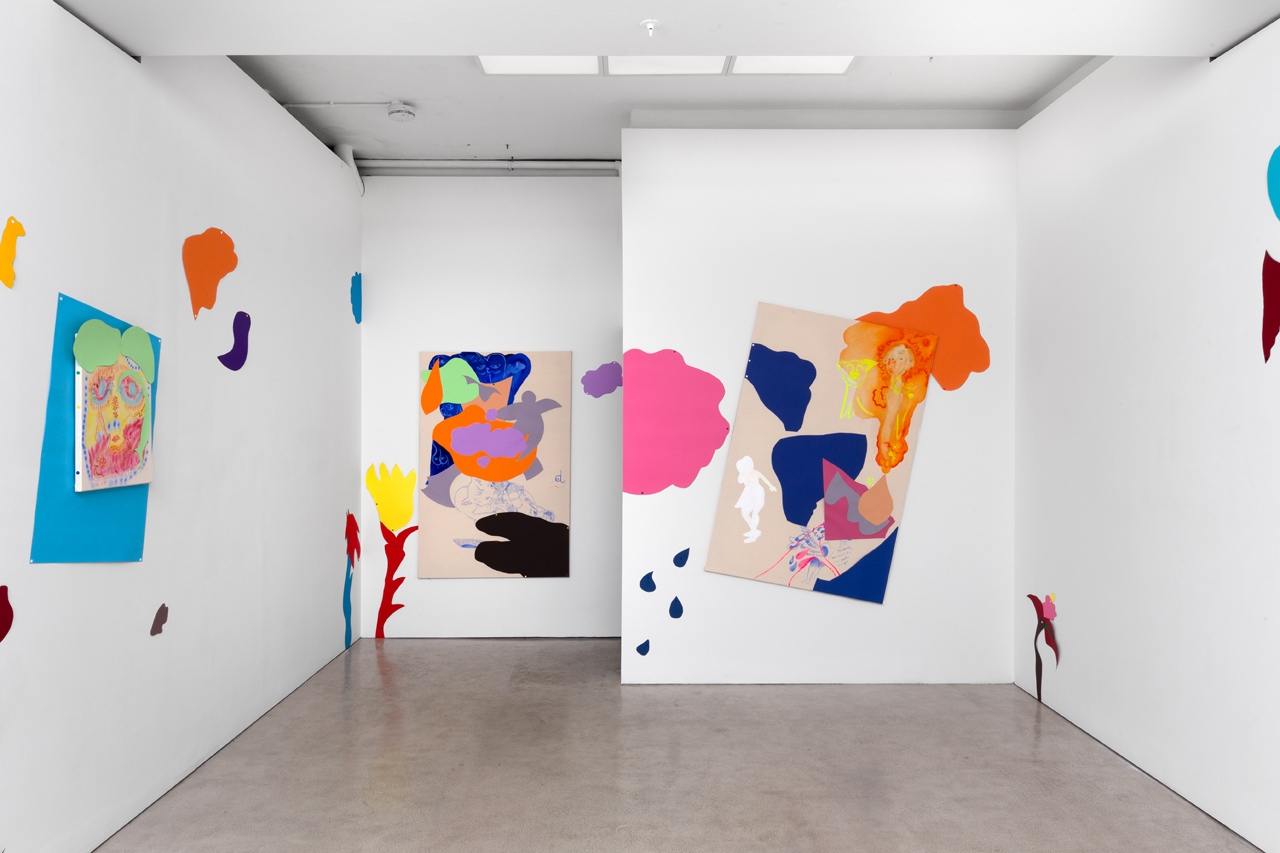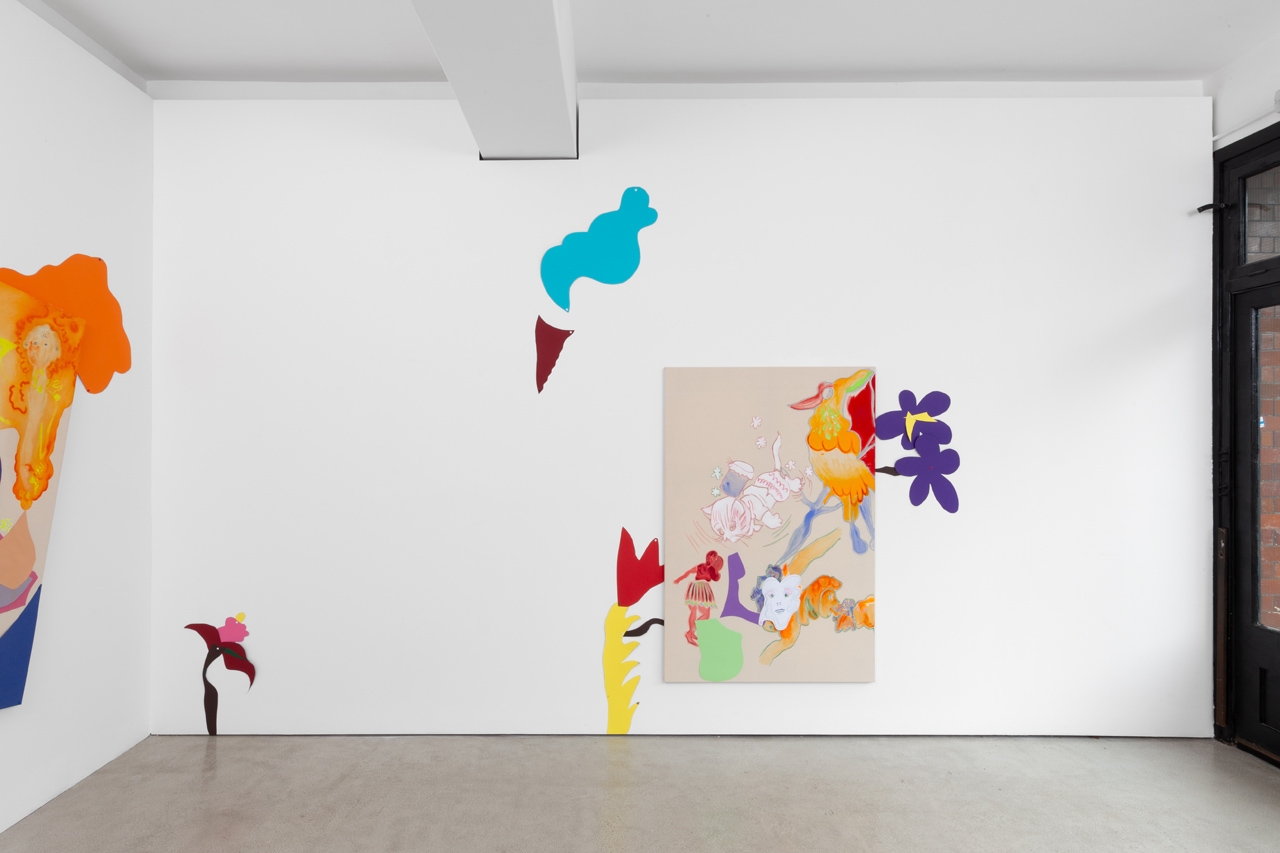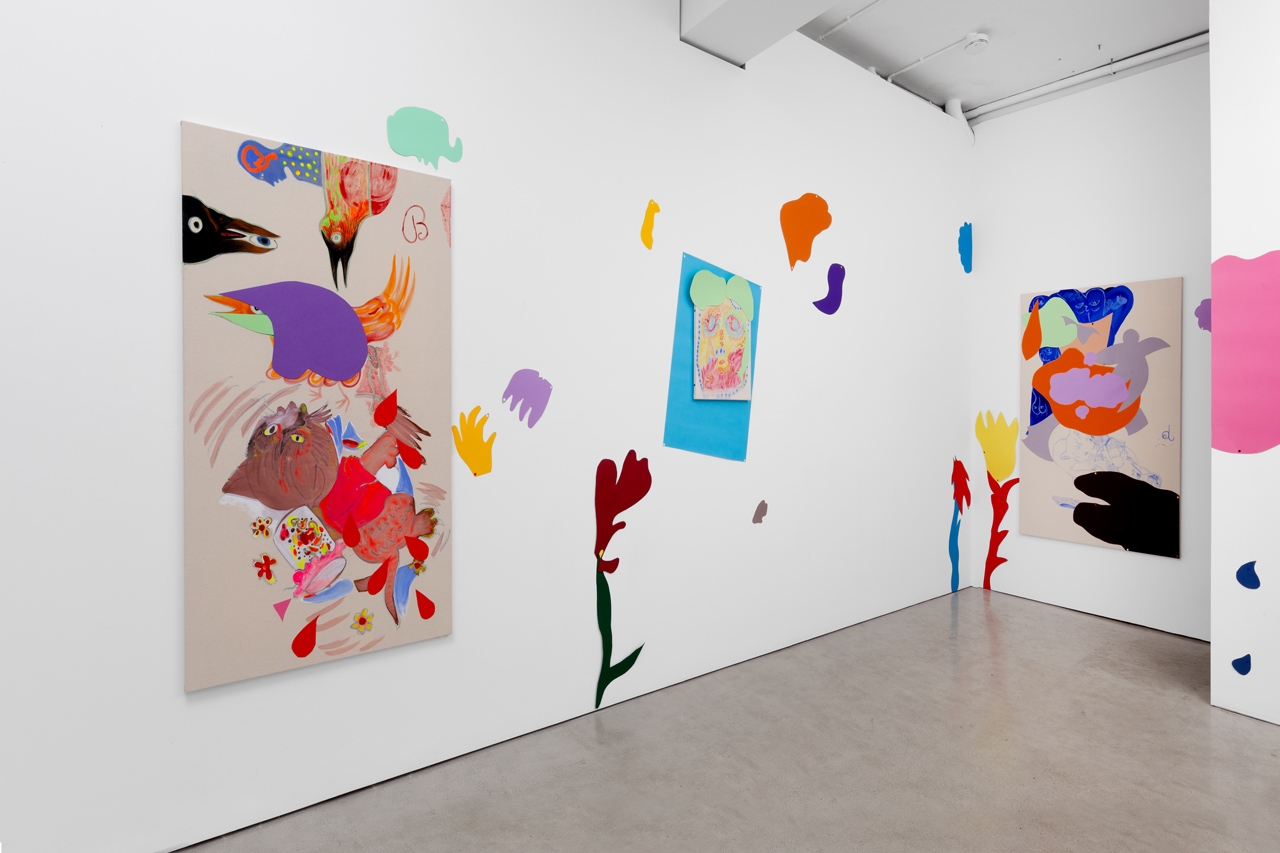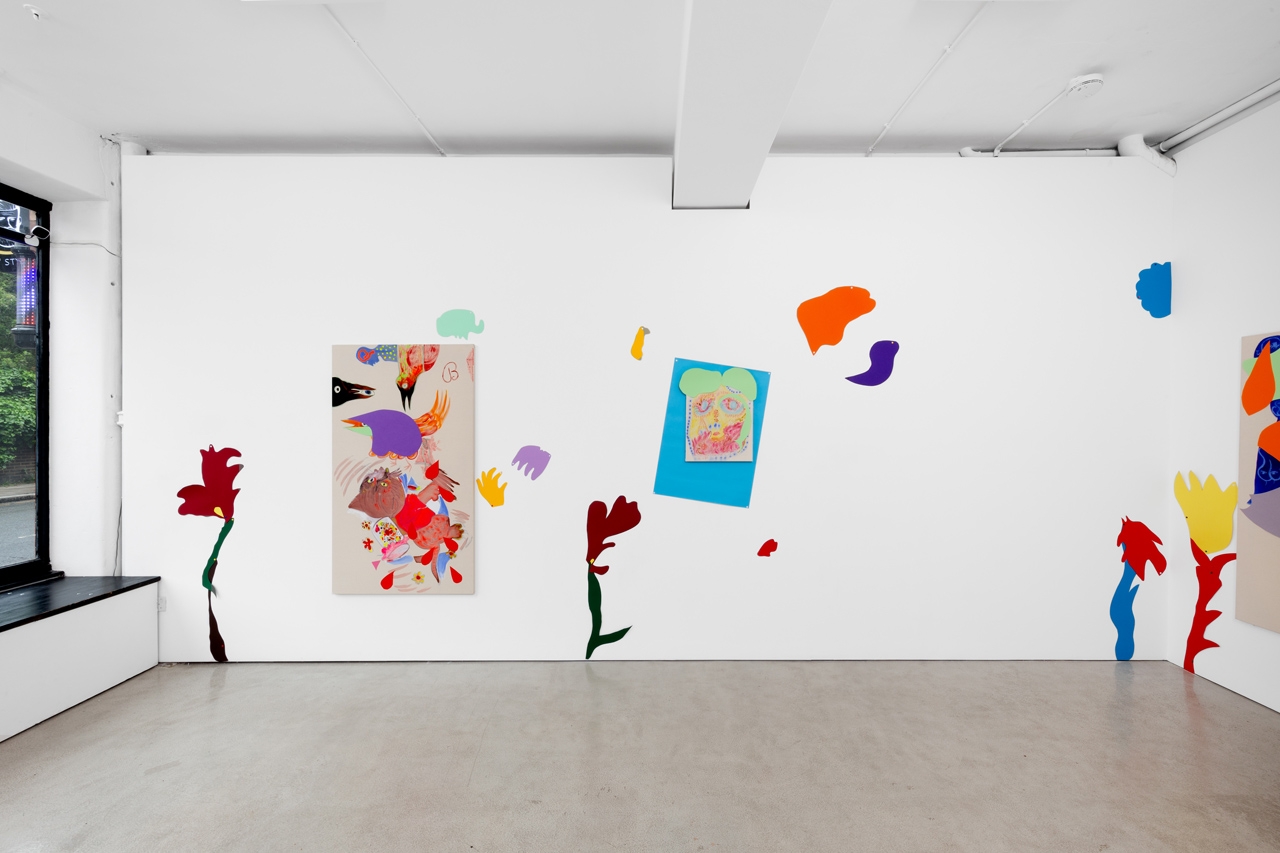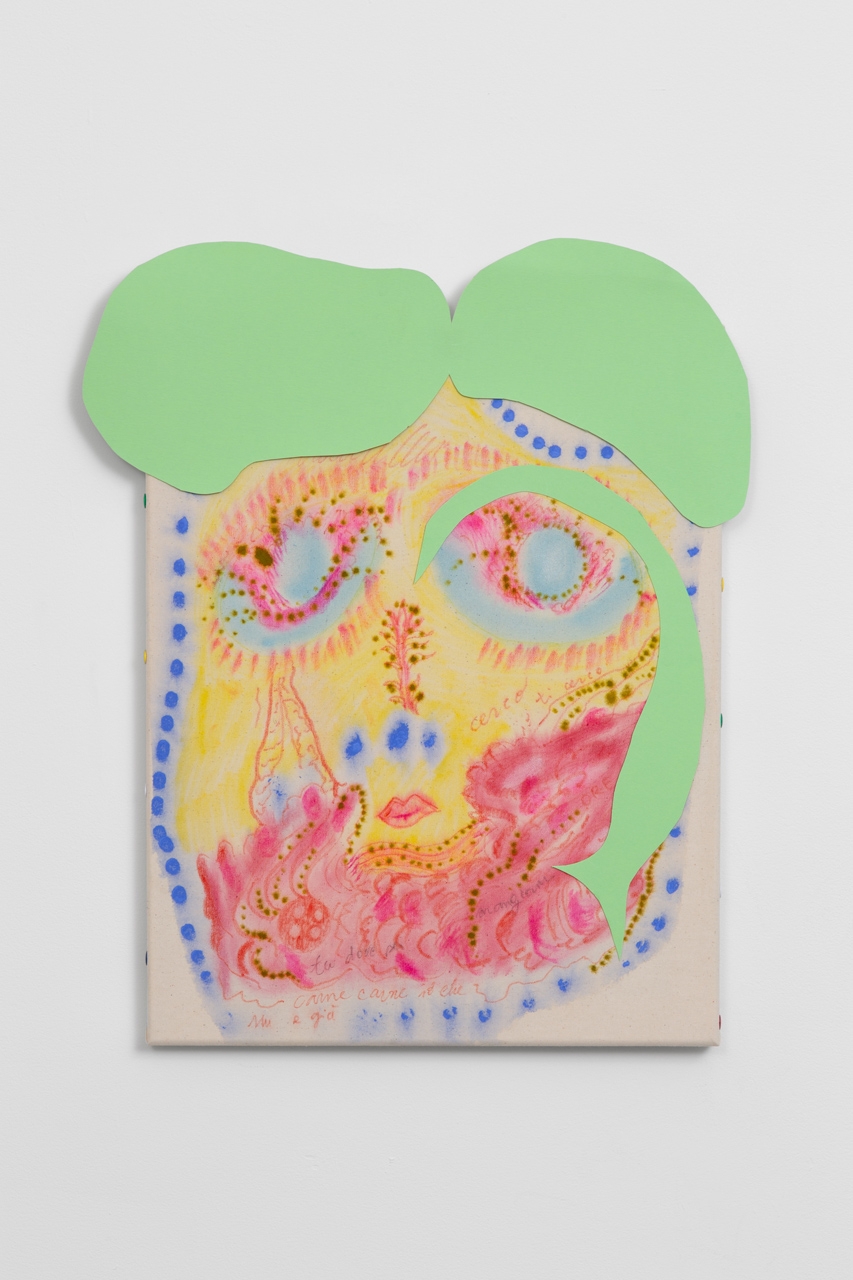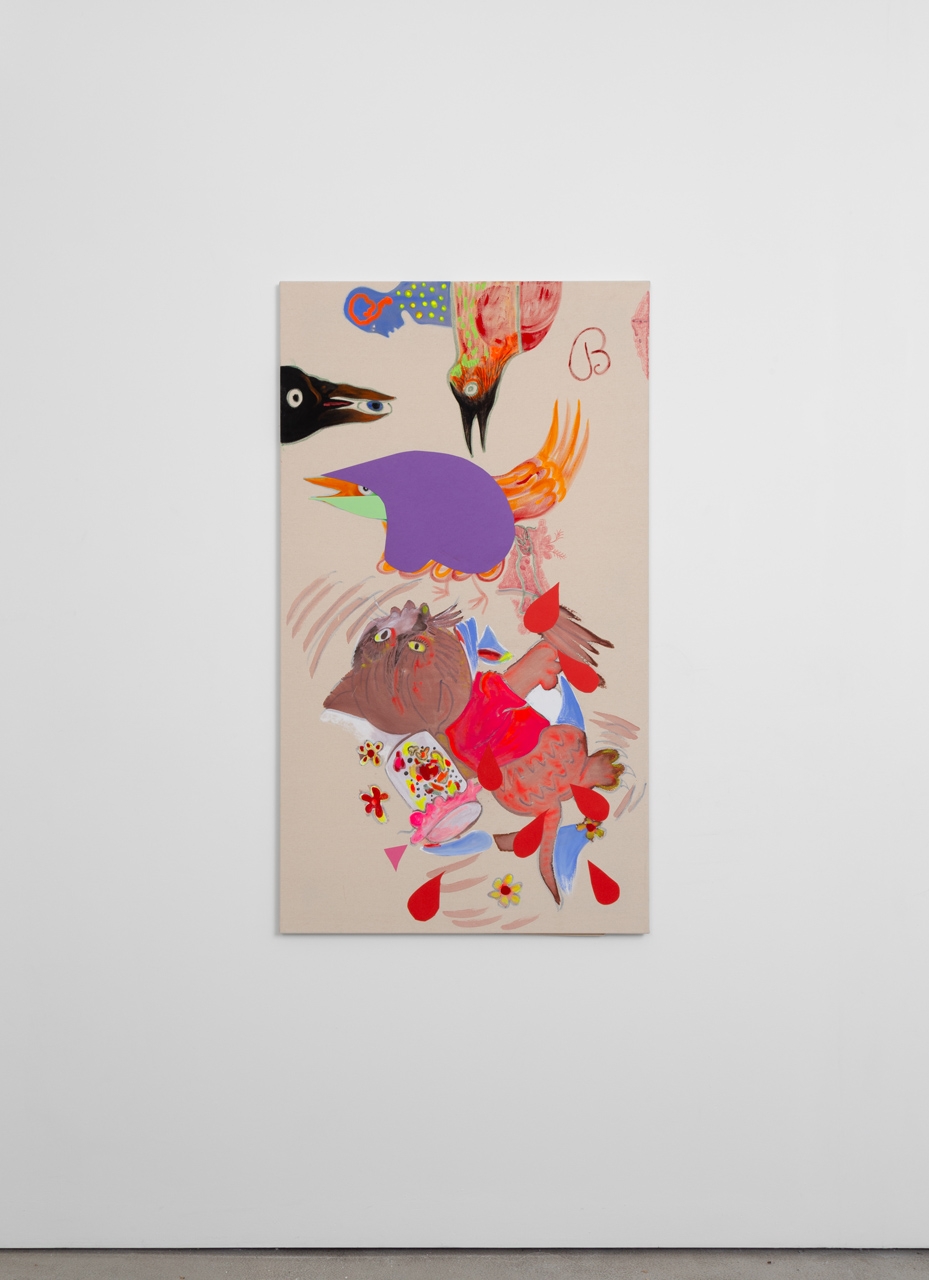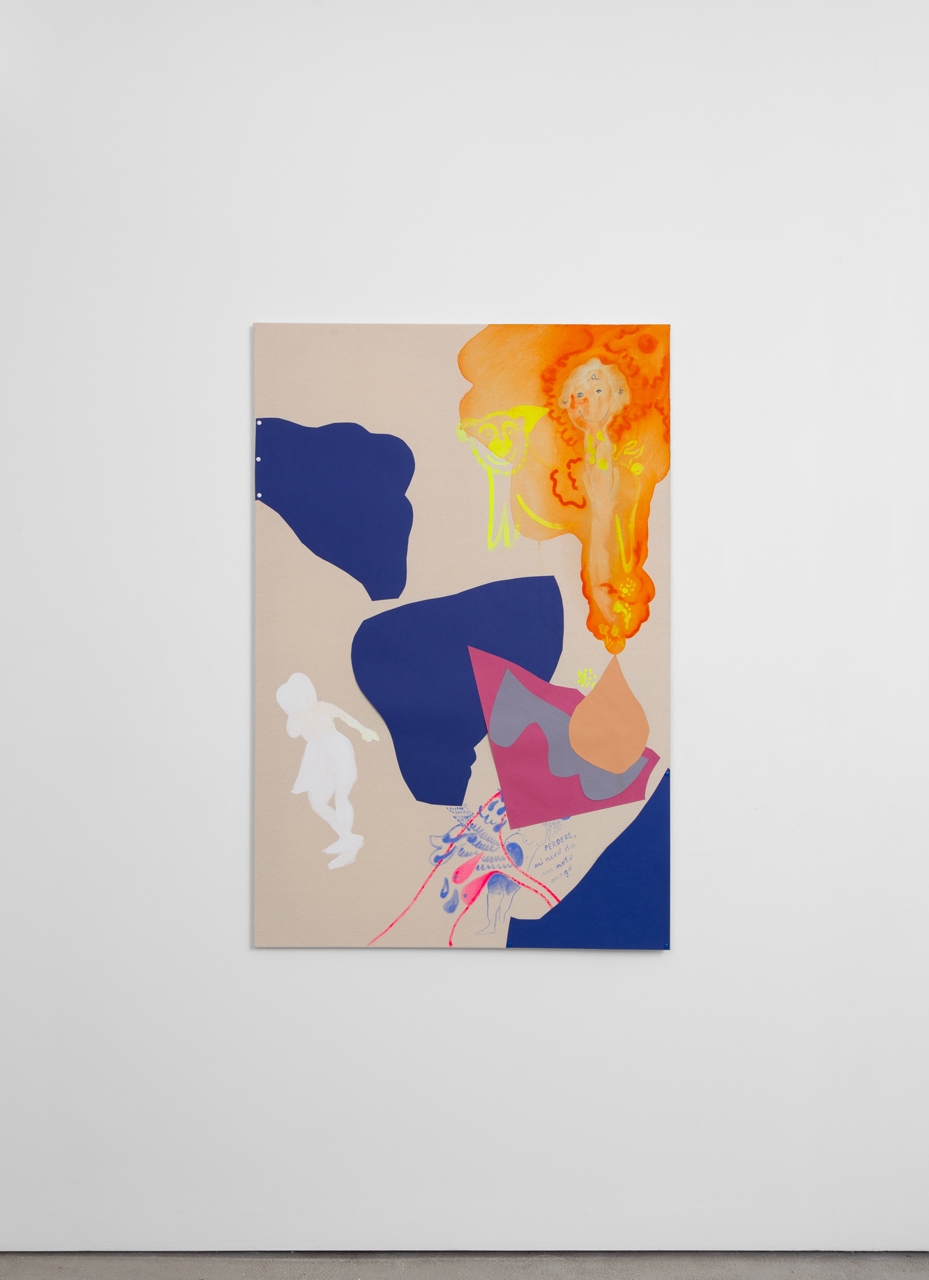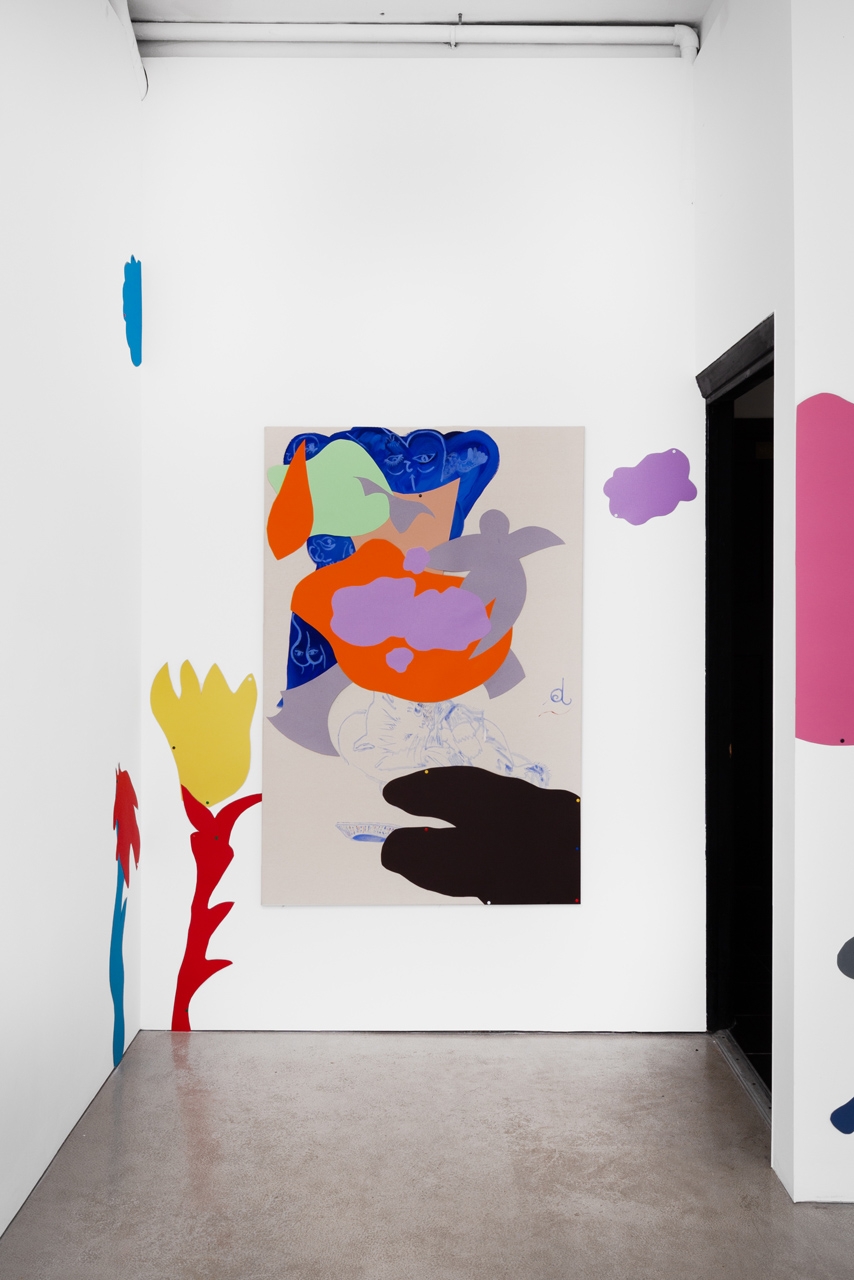Alice Visentin
amanti fabula11 May—22 June 2024
Opening: 10 May, 6pm
at Sundy
63 Black Prince Road
London SE11 6AB
amanti fabula is an ode to storytelling by artist Alice Visentin (b. Turin, Italy). A lover of stories, her world is one where all things converge. Teardrop cutouts weep from wonky paintings, a cat tumbles into a teapot in the middle of a naked canvas or cycles across a recipe for cookies. This is Visentin’s diary, impressions of her time in London – a culmination of symbols, feelings, archival materials, and art references, all of equal relevance. Both she and her paintings are porous and open, collages that spread out onto the walls, letting in the world and in turn spilling out everywhere, dripping. There is absolute balance in her chaos, which is that of the Greeks, the cosmos, the birth of all things.
Visentin works towards an affirmative fantasy. Her practice is not only colourful but embodies affirmation, employing methods like fabulation – a storytelling approach that blurs the lines between reality and fiction – to project and visualise better worlds. She uses techniques such as hydromancy, a form of divination that involves interpreting signs through the movement of water. By wetting her paintings and letting the water guide her, she engages in an act of entrustment in the larger forces of the universe.
During her residency at Gasworks, the artist immersed herself in the archives of Bishopsgate and May Day Rooms, looking for oral traditions and communities shaped around speech and vocality. She was compelled by the ephemera of the Wages for Housework campaigns of the 1970s, there was something unique in those images that spoke to her. As the daughter of a nursery teacher, she noted how political messages were conflated within a kindergarten’s aesthetics. Child-care advice mixed with colouring pages, and information on feminist organising with cooking recipes and nursery rhymes. Both adult and child could enjoy these publications, reflecting the entwined lives of women bound to housework and childcare, where the languages of adulthood and childhood inform one another, like reality and fantasy.
Seeing the world through a child’s eye holds a subversive power. The DIY and school-like aesthetic – coloured paper, pins, and pinking shears – is far from naive, and the readily available materials that Visentin also adopts, reaffirm the feminist motto that ‘the personal is political’. Like fantasy in fables, feminism communicates effectively through the use of metaphor. While feminism addresses real-world inequalities, it also serves as a metaphorical framework to illuminate truths about reality and possibility.
Ursula Le Guin1 said ‘Fantasy is true, of course. It isn’t factual, but it is true. Children know that. Adults know it too, and that is precisely why many of them are afraid of fantasy. They know that its truth challenges, even threatens, all that is false, all that is phony, unnecessary, and trivial in the life they have let themselves be forced into living.1 Visentin’s work exists in this world, not of factual truth but of true truth, the essence of things.
Searching in the archives, Visentin also revisited the legacy of Italian comedians and married couple Dario Fo and Franca Rame, known for their contributions to political satire and comedy. The duo employed a similar accessible tone to the women’s magazines, using humour to communicate anarchist messages and advocate for social justice.
Visentin began collecting and tracing materials from the archives, employing her magic lantern (an early- type projector) to cast them onto her canvases. She drew, transferred, and layered these symbols alongside elements from other artists and notes from her everyday life. The process of collage serves to level the playing field, allowing Visentin to include herself in the company of others and project her position in the world. This act mirrors the feminist practice of citation proposed by Sara Ahmed, which seeks to situate references together as a form of devotion in acknowledgement of those who came before us2.
In her previous works, Visentin utilised the magic lantern to work with transparency, often using a plastic film on which she directly drew before projecting onto gallery walls or her paintings, creating a performance that superimposed a series of drawings to narrate a story. This time, Visentin introduces opacity by blocking elements with paper cutouts or leaving the canvas untouched. The blank spaces serve as sites for future archaeology, hinting at hidden stories waiting to be unearthed, much like Visentin’s exploration of the archives, they reveal layers of possibility.
When asked about this shift, Visentin responds, ‘I simply cannot fully comprehend it, as I am only human.’
Written by Mariana Lemos
1. Ursula K. Le Guin essay ‘Why Are Americans Afraid of Dragons?’ which was published in the book ‘The Language of the Night: Essays on Fantasy and Science Fiction’ (1979) by Ursula K. Le Guin
2. Sara Ahmed, ‘Living a Feminist Life’ (2017), p. 81.
‘amanti fabula’ is presented by Sundy and Almanac, and is the first solo show in the UK by Alice Visentin. The exhibited works have been produced during the artist’s residency at Gasworks.
Special thanks to Nicoletta Fiorucci Foundation for their generous support.

